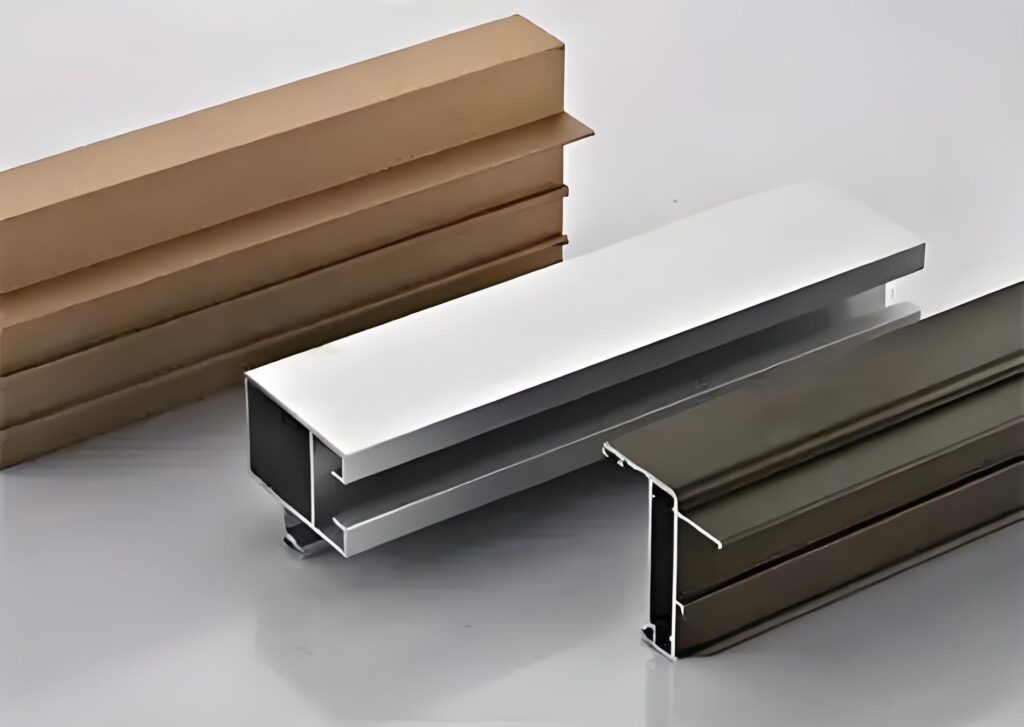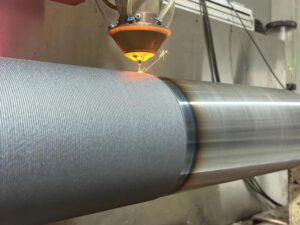What is Titanium?
Titanium is a lightweight, durable, and corrosion-resistant metal renowned for its exceptional strength-to-weight ratio. Discovered in 1791 by William Gregor, it is a transition metal found in minerals like ilmenite and rutile.

Its combination of biocompatibility and resistance to corrosion makes it ideal for medical implants, aerospace components, and marine applications. Titanium maintains a natural shine over time and withstands harsh conditions, making it a preferred material for high-performance applications.
What is Steel?
Steel is an alloy primarily composed of iron and carbon, with additional elements like chromium, nickel, or molybdenum to enhance specific properties. Its versatility, strength, and affordability have made it a cornerstone of construction, manufacturing, and machining for centuries.

Steel is available in various forms, including carbon steel, stainless steel, and tool steel, each tailored to meet specific industrial needs. Its machinability and adaptability make steel a reliable choice for a wide range of applications, from heavy structural components to precision tools.
Titanium vs Steel: Main Differences
The differences between titanium and steel mainly involve weight, corrosion resistance, cost, and performance under stress:
- Weight: Titanium is roughly 45% lighter than steel, advantageous in aerospace and automotive applications.
- Corrosion Resistance: Titanium resists rust and chemical attack far better than most steels.
- Cost: Titanium is significantly more expensive due to extraction, refining, and machining challenges.
- Machinability: Steel is generally easier to machine and weld, while titanium requires specialized tools and controlled environments.
- Magnetism: Steel is magnetic (except certain stainless steels), while titanium is non-magnetic, useful for sensitive electronic or medical applications.
Chemical Properties of Titanium and Steel
Composition
- Titanium: Often used in alloy form, with additions like aluminum, vanadium, or molybdenum to enhance strength and temperature resistance.
- Steel: Carbon content ranges from 0.2% to 2.1%, with alloying elements like chromium for stainless steel or tungsten for tool steel, enhancing hardness, wear resistance, and heat tolerance.
Corrosion Resistance
- Titanium: Naturally forms a stable oxide layer, protecting against rust and chemical attack, even in seawater.
- Steel: Stainless steel can resist corrosion, but carbon steels require coatings or maintenance to prevent oxidation.
Reactivity
- Titanium: Highly resistant to chemical reactions, suitable for handling acids and aggressive industrial chemicals.
- Steel: More reactive with acids and moisture; corrosion resistance depends on alloying and protective coatings.
Mechanical Properties of Titanium and Steel
Hardness
- Steel, especially high-carbon or tool steel, is harder than titanium.
- Titanium has a lower modulus of elasticity, allowing more flexibility without breaking.
Durability
- Titanium excels in chemical, marine, and high-temperature environments.
- Steel withstands heavy loads and repetitive mechanical stress effectively.
Melting Point
- Titanium: ~1,668°C (3,034°F)
- Steel: 1,370°C–1,540°C (2,500–2,800°F), depending on grade
Weldability
- Steel is generally easier to weld.
- Titanium requires inert atmosphere welding to avoid contamination.
Magnetism
- Steel is mostly magnetic.
- Titanium is non-magnetic, beneficial in medical and electronic applications.
Other Considerations
Cost
Titanium is more expensive due to extraction and machining challenges. Steel offers a cost-effective solution for large-scale production.
Appearance
Titanium retains its color over time, while steel may require more maintenance, particularly in corrosive environments.
Weight
Titanium is significantly lighter, ideal for applications where reducing weight without sacrificing strength is critical.
Choosing Between Titanium and Steel in Machining
Key factors to consider:
- Application Requirements: Titanium for high strength-to-weight ratio and corrosion resistance; steel for heavy-duty or cost-sensitive projects.
- Machining Challenges: Titanium is tougher to machine; steel is generally easier and faster to process.
- Budget: Steel is more affordable; titanium is justified for specialized high-performance applications.
- Environmental Factors: Titanium resists moisture, chemicals, and heat better.
- Weight Considerations: Titanium is preferable when weight reduction is a priority.
Balancing these factors ensures the right material choice for performance, cost, and manufacturability.
Conclusion
Selecting the right material is as much about understanding titanium and steel properties as it is about having machining expertise. Precionn delivers high-quality components from both metals, tailored to international standards.
From aerospace parts to industrial fittings, Precionn combines technical skill and precision machining to provide durable, reliable components that meet your project’s performance and budget requirements.




